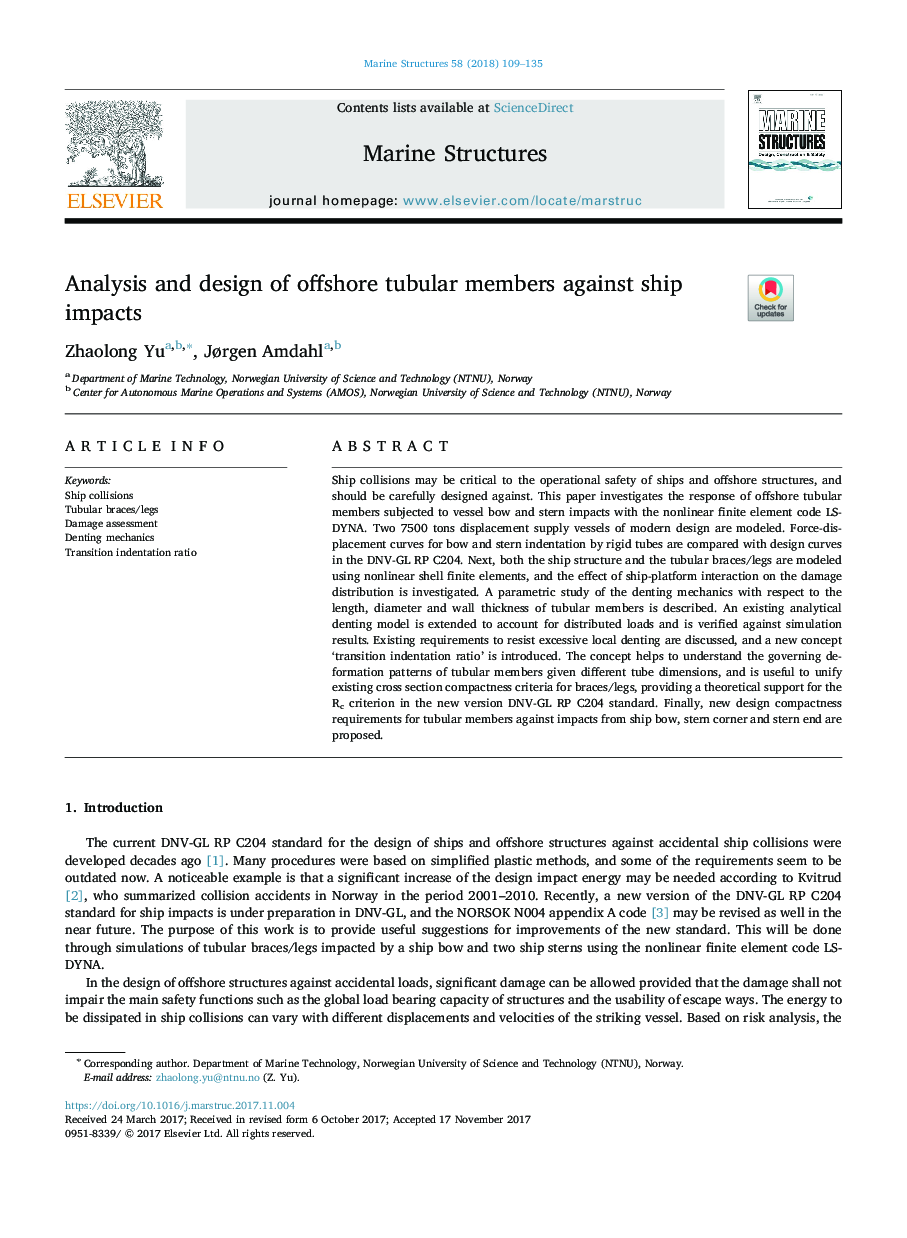| Article ID | Journal | Published Year | Pages | File Type |
|---|---|---|---|---|
| 6758045 | Marine Structures | 2018 | 27 Pages |
Abstract
Ship collisions may be critical to the operational safety of ships and offshore structures, and should be carefully designed against. This paper investigates the response of offshore tubular members subjected to vessel bow and stern impacts with the nonlinear finite element code LS-DYNA. Two 7500 tons displacement supply vessels of modern design are modeled. Force-displacement curves for bow and stern indentation by rigid tubes are compared with design curves in the DNV-GL RP C204. Next, both the ship structure and the tubular braces/legs are modeled using nonlinear shell finite elements, and the effect of ship-platform interaction on the damage distribution is investigated. A parametric study of the denting mechanics with respect to the length, diameter and wall thickness of tubular members is described. An existing analytical denting model is extended to account for distributed loads and is verified against simulation results. Existing requirements to resist excessive local denting are discussed, and a new concept 'transition indentation ratio' is introduced. The concept helps to understand the governing deformation patterns of tubular members given different tube dimensions, and is useful to unify existing cross section compactness criteria for braces/legs, providing a theoretical support for the Rc criterion in the new version DNV-GL RP C204 standard. Finally, new design compactness requirements for tubular members against impacts from ship bow, stern corner and stern end are proposed.
Keywords
Related Topics
Physical Sciences and Engineering
Engineering
Civil and Structural Engineering
Authors
Zhaolong Yu, Jørgen Amdahl,
